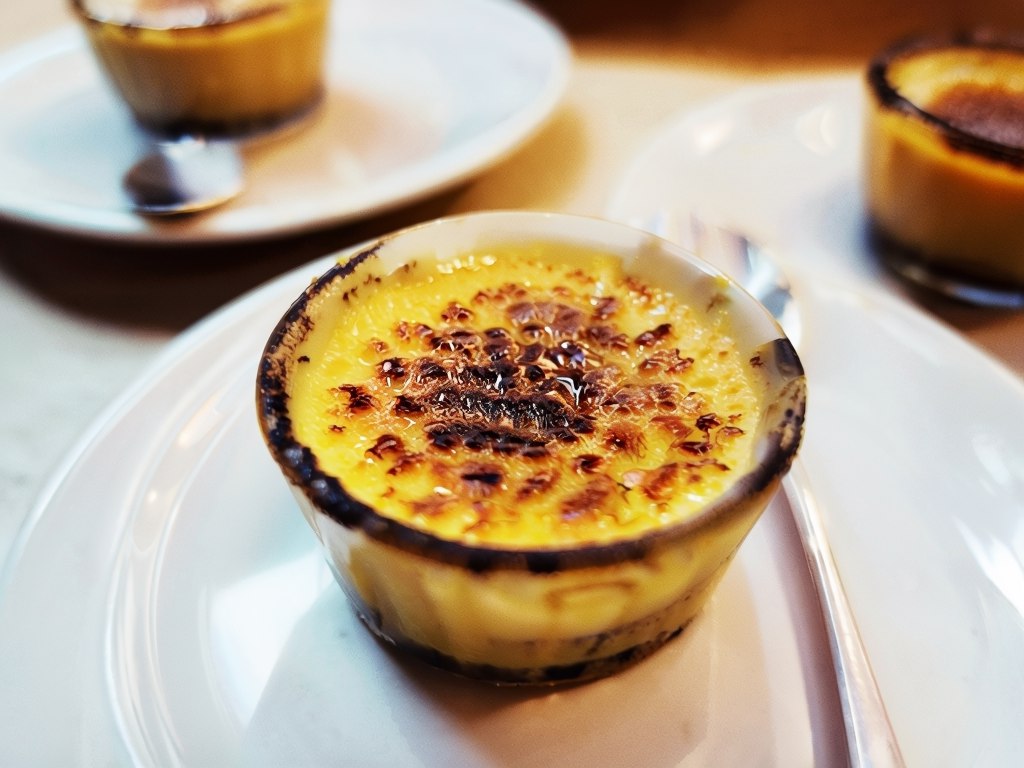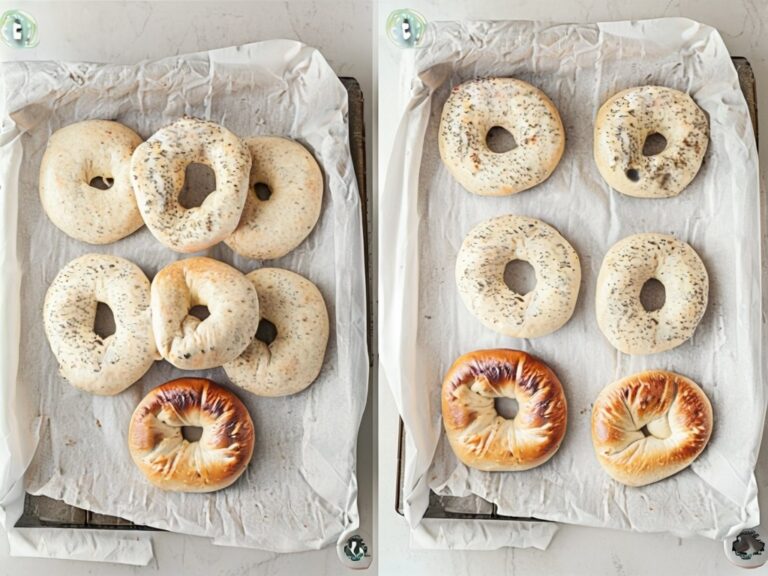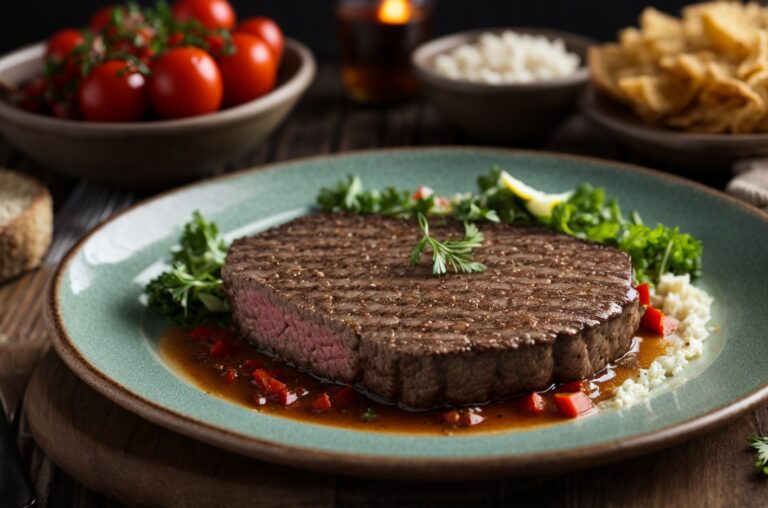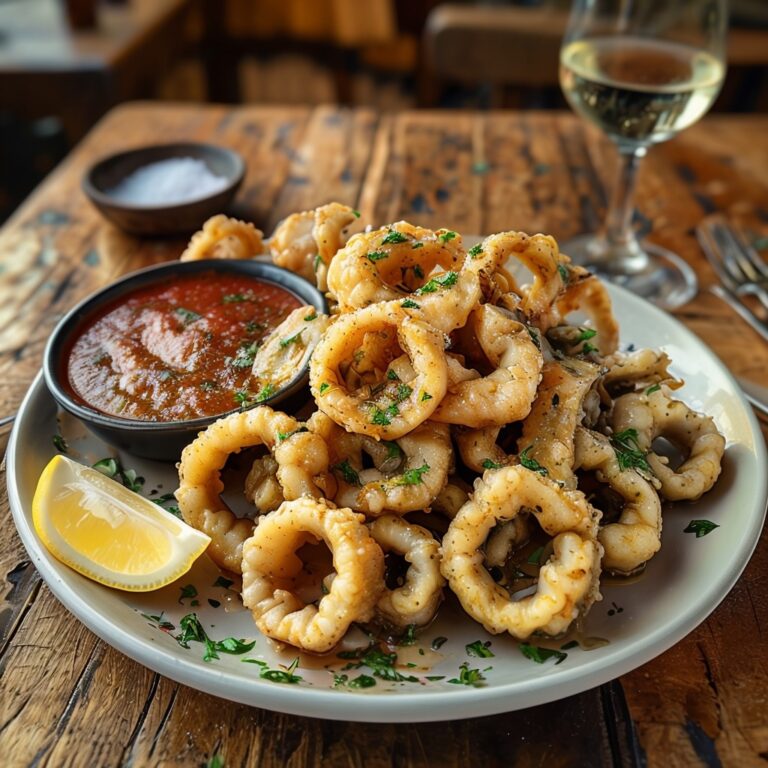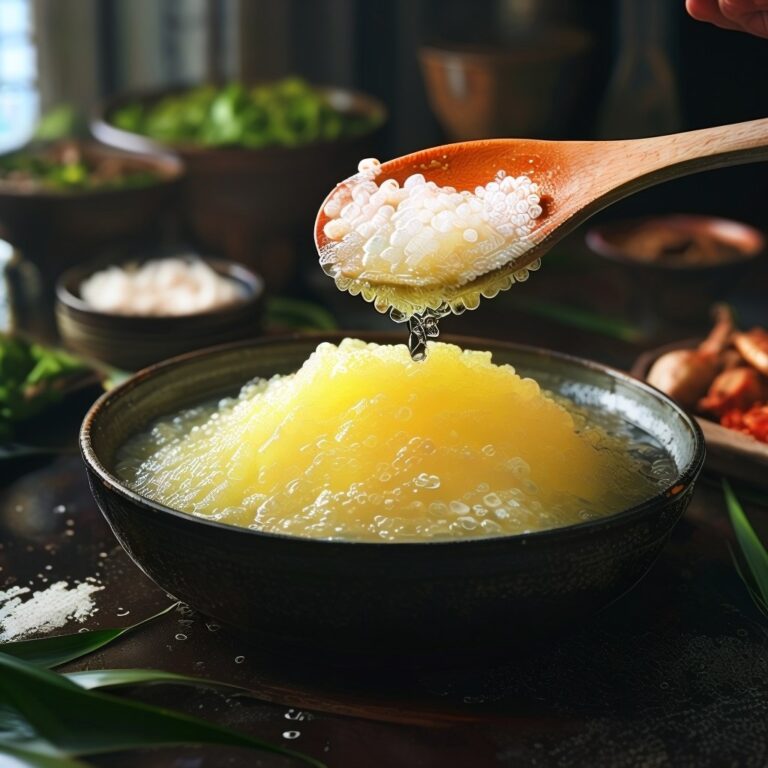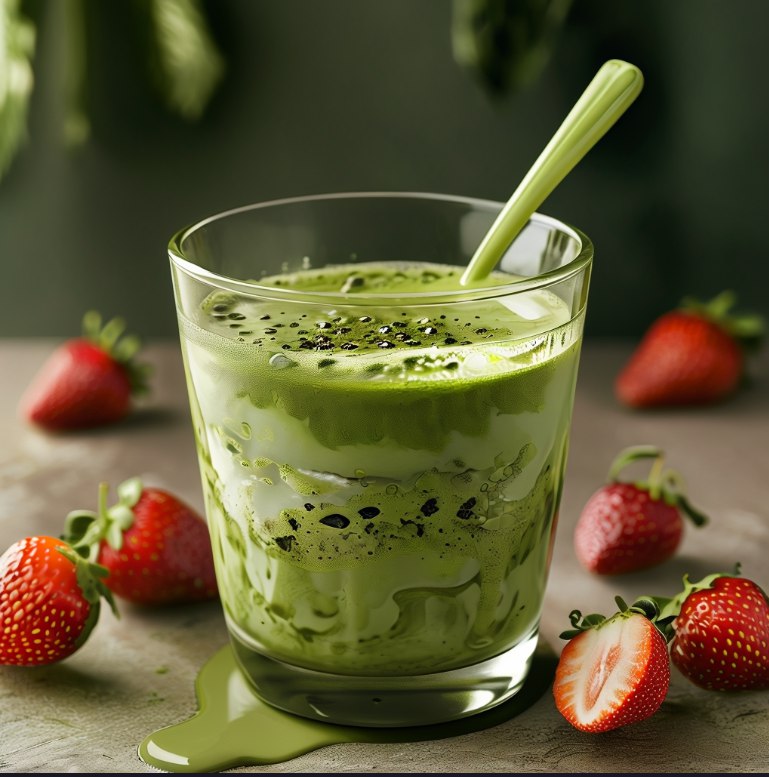What is crème brûlée made of?
Crème brûlée is one of those desserts that feels luxurious, but is surprisingly simple at its core. It’s a combination of creamy custard and a crispy, caramelized sugar topping that delights the senses. But what exactly goes into this timeless treat? In this article, we’ll dive into the ingredients of crème brûlée, explore its origins, and share insights into how you can make your own delicious crème brûlée at home. Whether you’re curious about what makes it so special or ready to try your hand at making this dessert, you’re in for a sweet journey!
Table of Contents
| Sr# | Headings |
|---|---|
| 1 | What is Crème Brûlée? |
| 2 | The Core Ingredients |
| 3 | Why Heavy Cream is Essential |
| 4 | Egg Yolks: The Magic Binder |
| 5 | Sugar and Its Role in Crème Brûlée |
| 6 | Vanilla: A Key Flavor Element |
| 7 | The Caramelized Sugar Topping |
| 8 | How to Make Crème Brûlée at Home |
| 9 | FAQs About Crème Brûlée |
What is Crème Brûlée?
Crème brûlée is a dessert that combines the richness of a creamy custard base with the satisfying crunch of a caramelized sugar topping. Its name, which translates to “burnt cream,” refers to the technique of torching sugar on top to create that iconic crispy layer.
But crème brûlée is more than just a dessert—it’s an experience. When you crack through the hard caramel with your spoon and scoop out a bit of the custard, you’re met with a wonderful contrast of textures: silky and smooth on the inside, crisp and crunchy on the outside. No wonder it’s a favorite in fine dining restaurants around the world!
The Core Ingredients
At its essence, crème brûlée is made of just a few ingredients: heavy cream, egg yolks, sugar, and vanilla. While these components are common in many desserts, they come together in crème brûlée in a way that creates something truly special.
Heavy Cream
Heavy cream provides the rich, velvety texture of the custard. It’s responsible for the indulgent mouthfeel that sets crème brûlée apart from lighter desserts like puddings or mousses.
Egg Yolks
Egg yolks serve as the thickening agent, transforming the cream into a luscious custard. Yolks add a subtle richness to the flavor and contribute to the custard’s creamy consistency.
Sugar
Sugar is used in two ways: to sweeten the custard and to create the caramelized sugar crust. The sugar topping is what makes crème brûlée fun to eat, offering a crisp contrast to the smooth custard.
Vanilla
Vanilla is the primary flavor in most crème brûlée recipes. While the dessert is simple in its ingredients, the aromatic, warm taste of vanilla elevates the entire dish. You can use either vanilla extract or vanilla bean for this.
These ingredients are deceptively simple, but when combined in the right way, they create a dessert that’s sophisticated and indulgent.
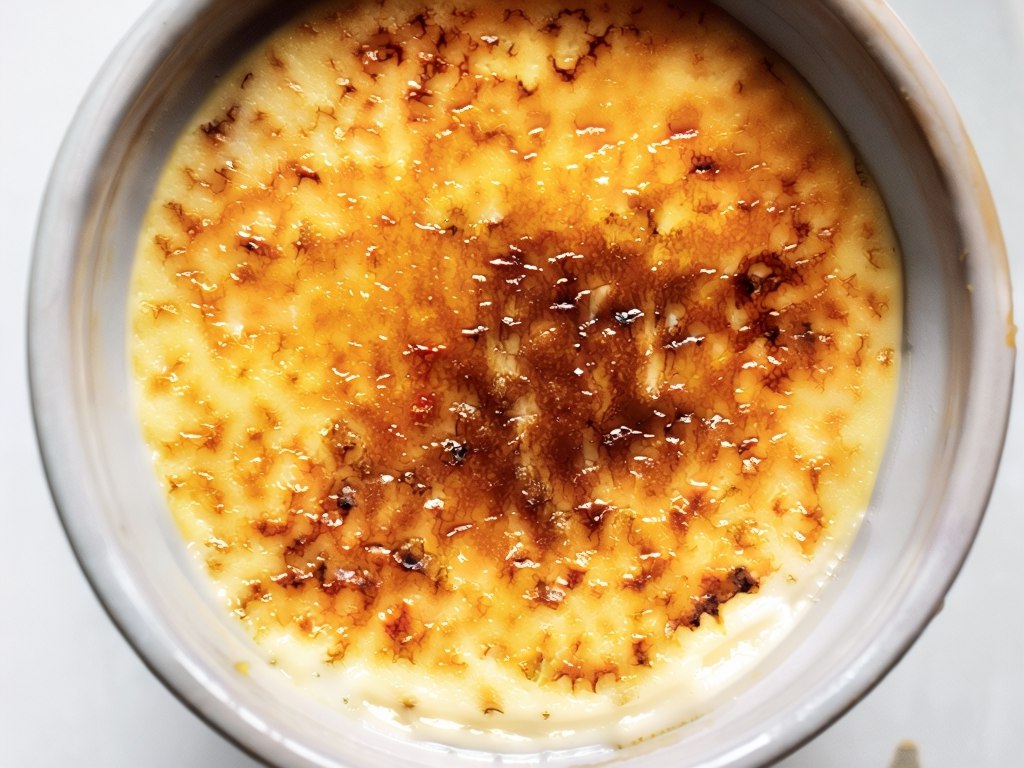
Why Heavy Cream is Essential
When it comes to crème brûlée, heavy cream is the star ingredient that provides the luxurious texture we all know and love. But what makes it so essential?
The Role of Fat in Cream
Heavy cream contains a high percentage of fat—around 36-40%. This fat is what gives crème brûlée its velvety, melt-in-your-mouth consistency. It’s also what makes it feel indulgent without being overly rich.
Smooth and Silky
The high fat content in heavy cream helps create a smooth texture in the custard. Think of it like a blanket that wraps all the other ingredients in a creamy embrace, ensuring that the custard is soft, but not runny.
Cream vs. Milk
Could you make crème brûlée with milk? Technically, yes, but the result would be far less satisfying. Milk lacks the fat content needed to create that signature smooth texture. Substituting milk for cream would lead to a thinner, more watery custard. Heavy cream is non-negotiable if you want your crème brûlée to live up to its name!
Egg Yolks: The Magic Binder
Egg yolks are another critical component in crème brûlée, acting as the custard’s thickening agent. But their role goes beyond just adding texture—they contribute flavor, richness, and that luxurious mouthfeel.
How Egg Yolks Thicken
Egg yolks thicken the custard when they are gently cooked. The proteins in the yolks coagulate as they heat up, creating a firm but delicate texture. This is what turns the mixture of cream, sugar, and vanilla into a smooth, set custard.
Richness in Flavor
Yolks add more than just thickness—they also bring a subtle, rich flavor to the crème brûlée. This richness is essential for balancing out the sweetness from the sugar and the intense vanilla flavor. Without egg yolks, the custard would lack depth and complexity.
Tempering: A Crucial Step
When making crème brûlée, you can’t simply mix raw egg yolks with hot cream, or you’ll end up with scrambled eggs! Instead, the yolks need to be tempered. This means slowly adding the hot cream to the yolks while whisking constantly. This gradual process prevents the yolks from cooking too quickly and ensures a smooth custard base.
Sugar and Its Role in Crème Brûlée
Sugar is an indispensable ingredient in crème brûlée, serving two key purposes: sweetening the custard and forming the crispy, caramelized topping. Let’s explore each of these roles in more detail.
Sweetening the Custard
Sugar is added to the cream and egg mixture to balance out the richness of the yolks and cream. While crème brûlée is not an overly sweet dessert, the sugar provides just the right amount of sweetness to complement the vanilla flavor.
The Caramelized Sugar Topping
The second—and perhaps most iconic—role of sugar in crème brûlée is the crispy topping. After the custard is baked and cooled, a thin layer of sugar is sprinkled on top and then torched. The heat from the torch melts the sugar, which quickly hardens into a caramelized crust as it cools. This crust is what makes crème brûlée so fun to eat—you get to crack through it with your spoon!
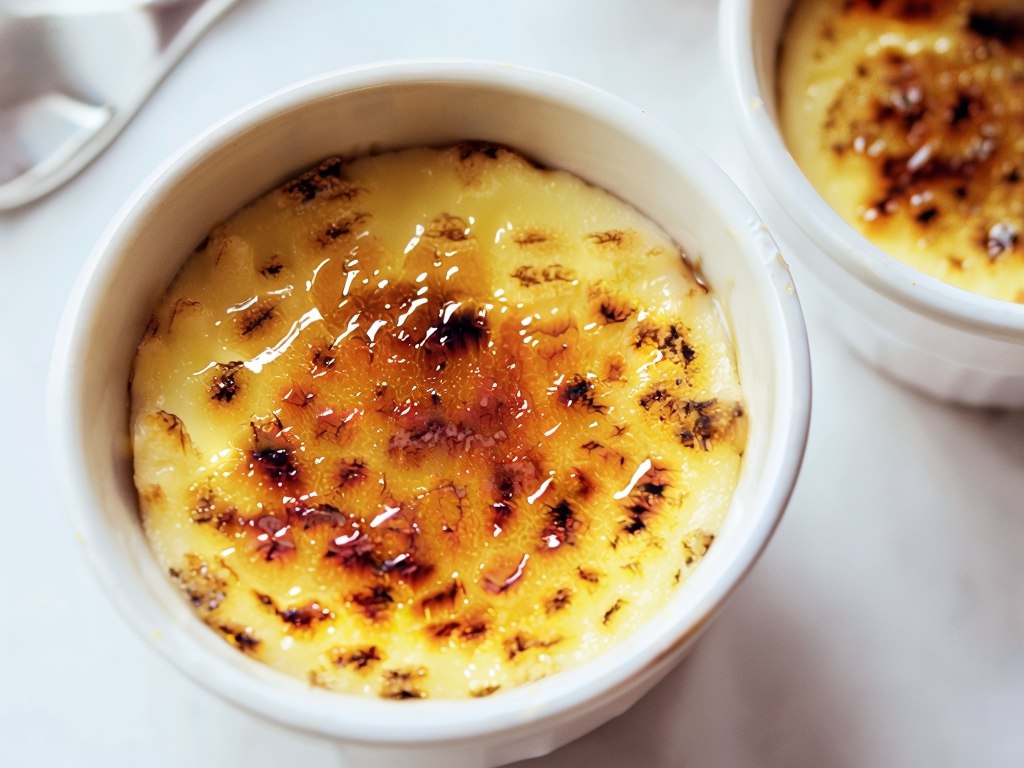
Vanilla: A Key Flavor Element
Vanilla is the classic flavor in crème brûlée, lending its aromatic warmth to the otherwise simple ingredients. But why is vanilla so important, and what options do you have when it comes to incorporating this flavor?
Why Vanilla?
Vanilla is a versatile flavor that complements the richness of the custard without overpowering it. It has a floral, sweet scent that elevates the simple cream, sugar, and egg mixture, making it feel more sophisticated.
Vanilla Bean vs. Extract
There are two common ways to incorporate vanilla into crème brûlée: using a whole vanilla bean or vanilla extract. Both will give you great results, but they offer slightly different experiences.
- Vanilla Bean: If you want to go the extra mile, using a whole vanilla bean will give your crème brûlée an intense, pure vanilla flavor. You’ll also get those beautiful little black specks of vanilla seeds throughout the custard, adding a visual element.
- Vanilla Extract: If you don’t have a vanilla bean on hand, vanilla extract is a great alternative. It’s easier to use and still provides a rich, aromatic flavor.
The Caramelized Sugar Topping
The final touch on crème brûlée is the caramelized sugar topping, which is essential for creating that signature “crack” when you tap your spoon on the dessert. But how does this process work, and why is it so important to the overall experience?
Creating the Caramel Layer
After the custard has set and cooled, the next step is to add a thin layer of sugar on top. Most recipes call for granulated sugar, but some people prefer using brown sugar for a deeper caramel flavor. A kitchen torch is then used to melt the sugar until it bubbles and turns golden brown. As the sugar cools, it hardens into a glass-like layer.
Why the Crunch Matters
The crisp sugar topping is more than just a visual or textural contrast—it enhances the entire experience of eating crème brûlée. The sharp crack of the sugar followed by the soft, creamy custard underneath creates a delightful interplay of textures.
How to Make Crème Brûlée at Home
Making crème brûlée at home may seem intimidating, but with the right technique, it’s surprisingly simple. Here’s a step-by-step guide to help you make this classic dessert in your own kitchen.
Ingredients:
- 2 cups heavy cream
- 5 egg yolks
- 1/2 cup granulated sugar (plus extra for the topping)
- 1 vanilla bean (or 1 teaspoon vanilla extract)
Instructions:
- Preheat Your Oven: Start by preheating your oven to 325°F (160°C).
- Prepare the Cream: In a saucepan, heat the heavy cream over medium heat until it just starts to simmer. If you’re using a vanilla bean, split it open and scrape the seeds into the cream, then add the whole pod. Let the cream infuse with the vanilla for
- a few minutes, then remove it from the heat. If you’re using vanilla extract, add it later.
- Whisk the Egg Yolks and Sugar: In a mixing bowl, whisk together the egg yolks and the granulated sugar until the mixture is pale and slightly thickened. This should take about 2-3 minutes. If you’re using vanilla extract, add it to this mixture.
- Temper the Egg Mixture: Slowly pour the hot cream into the egg yolk mixture while whisking constantly. This gradual process is crucial to prevent the eggs from cooking too quickly.
- Strain the Mixture: To ensure a smooth custard, strain the mixture through a fine mesh sieve into another bowl. This will remove any bits of cooked egg or the vanilla bean pod, giving you a silky texture.
- Pour into Ramekins: Divide the custard mixture evenly among ramekins, filling them about three-quarters full.
- Bake in a Water Bath: Place the ramekins in a baking dish and fill the dish with hot water until it reaches halfway up the sides of the ramekins. This water bath helps the custard cook evenly and gently.
- Bake: Bake for about 30-35 minutes, or until the edges are set but the centers still have a slight jiggle.
- Cool and Refrigerate: Remove the ramekins from the water bath and allow them to cool at room temperature for about 30 minutes. Then, cover them with plastic wrap and refrigerate for at least two hours, or overnight.
- Caramelize the Sugar: When you’re ready to serve, sprinkle a thin, even layer of granulated sugar over the top of each custard. Using a kitchen torch, carefully melt the sugar until it bubbles and turns a deep amber color. If you don’t have a torch, you can place the ramekins under the broiler for a minute or two, watching closely to prevent burning.
- Let it Set: Allow the caramelized sugar to harden for a minute before serving.
- Enjoy: Serve your homemade crème brûlée with fresh berries or a dollop of whipped cream, if desired.
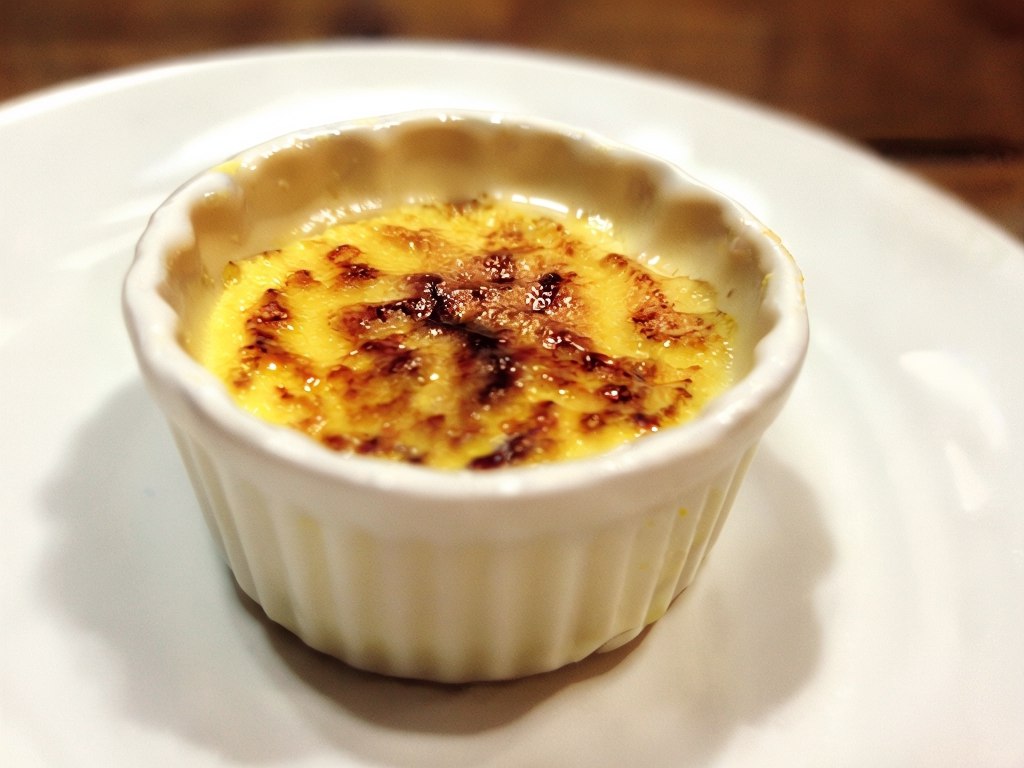
FAQs About Crème Brûlée
What is the best way to store leftover crème brûlée?
Leftover crème brûlée can be stored in the refrigerator for up to two days. However, it’s best to add the caramelized sugar topping just before serving for the best texture.
Can I make crème brûlée in advance?
Absolutely! Crème brûlée can be made a day in advance. Prepare the custards and refrigerate them without the sugar topping. Just add the sugar and caramelize before serving.
What if I don’t have a kitchen torch?
If you don’t have a kitchen torch, you can use your oven’s broiler. Just be sure to watch it closely to prevent burning, as it can happen quickly.
Can I use other flavors besides vanilla?
Yes! You can infuse the cream with various flavors, such as citrus zest, coffee, or even spices like cinnamon. Just remember that the classic crème brûlée flavor is vanilla, which pairs beautifully with the creamy custard.
Is there a non-dairy alternative for crème brûlée?
Yes, you can use coconut cream or cashew cream as a non-dairy alternative. However, the texture and flavor will be slightly different, but it can still be delicious!
Crème brûlée is a timeless dessert that offers a delightful combination of textures and flavors, making it a favorite among dessert lovers. With just a handful of ingredients—heavy cream, egg yolks, sugar, and vanilla—you can create a dish that feels extravagant and satisfying. Whether you choose to stick to the classic vanilla flavor or experiment with other tastes, this dessert is sure to impress. So, why not try your hand at making crème brûlée at home? You’ll enjoy the sweet satisfaction of creating a dessert that’s as delicious as it is elegant!

